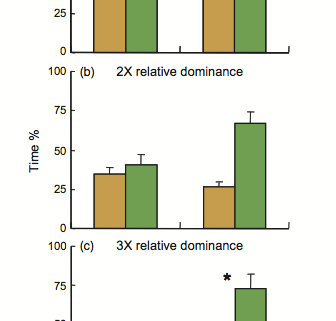How will global warming affect different marine species?
by Jennah Caster, RJD Intern
Climate change is a phenomenon that is affecting many marine species. However, not all species are influenced in the same ways, or to equal degrees. Average sea surface temperatures (SST) have shifted in some marine regions faster than the global average (Trenberth et al. 2007). Extreme localized changes have lead to large mortality events, altered interactions, and shifts in habitat for several marine species over recent decades (Perry et al. 2005; Dulvy et al. 2008). Understanding these repercussions are paramount to making more accurate predictions of the future effects of climate change on species, and overall ecosystem function.
Ecosystem function can be greatly affected by changes in species interactions. Many species are able to co-exist in the same habitat. Yet, when the environment changes, interactions among species are altered by their ability to adapt to new conditions (Tylianakis et al. 2008). Some species have certain adaptations that allow them to tolerate warming events better than others. For mobile organisms, climate change can lead to forced competition among similar species over habitat with preferable conditions (Tylianakis et al. 2008). This can result in warm-adapted species winning at the expense of cold-adapted species (Milazzo et al. 2012).
Italian scientists from the University of Palermo and the Institute for Coastal Marine Environment (IAMC-CNR) conducted a study to test the projected effects of sea temperature changes on a warm-adapted (‘winner’) fish species versus a similar cold-adapted (‘loser’) species. They used two wrasse species for the experiment: Thalassoma pavo (potential ‘winner’ species in warming scenarios) Coris julis (potential ‘loser’ species). These wrasses were chosen because they are among the most abundant and prevalent species in the Mediterranean Sea, where the average SST has risen faster than the global average (Trenberth et al. 2007). Furthermore, they have similar characteristics including diets, feeding strategies, and habitat preference. (Kabakasal 2001).
The scientists manipulated SST in several constructed outdoor arenas to test the interactions between these species at present-day and projected SST. The wrasses were visually assessed at peak activity hours. In the areas with only one species present, the wrasses displayed similar habitat selection, preferring algal over seagrass habitat. However, when both species were present, the ‘winner’ species thrived in the preferred algal habitat and the ‘loser’ species relocated to less preferred seagrass habitat within the same environment. This figure illustrates the average time that the ‘loser’ species spent in each habitat at present temperatures and projected warmer temperatures as the relative abundance of the ‘winner’ species increased.
This study shows how SST rise due to climate change can lead to altered interactions among rival species. These behavioral changes have the potential to influence community structure and diversity in unexpected ways. The results from this study provide insight on the potential affects warming may have on individual species. More detailed models and observational studies are needed to further understand the complex consequences that climate change will have for marine environments.
REFERENCES
Dulvy, N.K., Rogers, S.I., Jennings, S., Stelzenmuller, V., Dye, S.R. & Skjoldal, H.R. (2008) Climate change and deepening of the North Sea fish assemblage: a biotic indicator of warming seas. Journal of Applied Ecology, 45, 1029–1039.
Kabakasal, H. (2001) Description of the feeding morphology and the food habits of four sympatric labrids (Perciformes, Labridae), from South- Eastern Aegean Sea, Turkey. Netherland Journal of Zoology, 51, 439– 455.
Milazzo, M., Mirto, S., Domenici, P. & Gristina, M. (2012) Climate change exacerbates interspecific interactions in sympatric coastal fishes. Journal of Animal Ecology, 1-10.
Perry, A.L., Low, P.J., Ellis, J.R. & Reynolds, J.D. (2005) Climate change and distribution shifts in marine fishes. Science, 308, 1912–1915.
Trenberth, K.E., Jones, P.D., Ambenje, P., Bojariu, R., Easterling, D. & Klein Tank, A. et al. (2007) Observations: Surface and Atmospheric Climate Change. Climate Change 2007: The Physical Science Basis Con- tribution of Working Group I to the Fourth Assessment
Report of the Intergovernmental Panel on Climate Change (eds. S. Solomon, D. Qin, M. Manning, Z. Chen, M. Marquis, K.B. Averyt, M. Tignor & H.L. Miller), pp. 235–336. Cambridge University Press, Cambridge, UK.
Tylianakis, J.M., Didham, R.K., Bascompte, J. & Wardle, D.A. (2008) Global change and species interactions in terrestrial ecosystems. Ecology Letters, 11, 1351–1363.





Leave a Reply
Want to join the discussion?Feel free to contribute!